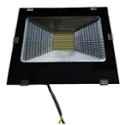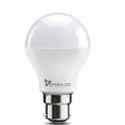Translate:
A guide on how to choose the right kind of LED lights
Light Emitting Diode i.e LED lights are nothing but the latest inventions by lighting industries with lots of technological advancements. Unlike the traditional incandescent bulbs, these lights are very powerful light bulbs which come in various shapes and sizes. Also, these bulbs are more energy efficient and high durable when compared with incandescent bulbs.
Apart from these benefits, light emitting technology comes with other advantages such as an extraordinary lifespan (around 60,000 hours), 90% more efficient than the incandescent bulbs, high safety, low maintenance and low energy consumption.
Today, in the market you can find a wide range of light emitting bulbs which come with different specifications. Due to this it is very difficult for choosing the right LED light which suits the best for your lifestyle. In this article, we have listed few categories of lights along with their specifications and their best uses.
Bonus point: We have also mentioned some of the tips which are very helpful when you are buying these long lasting lights.
What are the benefits of using LED Lights?
Here we have listed the top 7 benefits of why you need to choose LED lights over incandescent bulbs:
Efficiency:
These lights are very powerful and come along with sufficient energy. They also consume less power (almost 90% less) than the incandescent lights. Due to this even the electric bill amount is reduced letting you save your money. Also, they last much longer than an average incandescent bulb and have low maintenance.
Durability:
In LEDs, semiconductor devices are used rather than neon gases or filament. Due to this, these devices express a very solid light. These bulbs are nothing but tiny chips which are enclosed in the epoxy plant, making them more durable than the traditional neon or incandescent bulbs.
Safety:
Superior safety might be one of the most noticeably benefits of these bulbs. Unlike incandescent bulbs, these devices do not produce any warmth/heat no matter how long they are kept On. Further, they generate only 3.4btus whereas incandescent bulbs generate upto 85. On the other hand, amoureux lightings are too hot to touch as they liberate almost 90% of the utilizing energy via heat whereas this is not the case in light emitting bulbs.
Longevity:
The lifespan of an incandescent bulb is only upto 15,000 hours (2years) whereas that of an LED bulb is almost up to 60,000 hours (7years) which is x3 of an incandescent. Normally, they last 133times more than traditional incandescent bulbs and 10times more than the small fluorescent light bulbs. Also, due to the longer lifetime, these lights come with very less maintenance cost.
Eco-Friendly:
Unlike the neon lights in which mercury is used which is eco-unfriendly, these lights are built by using eco-friendly materials. Also, these bulbs are considered as recyclable.
Color:
These lights are available in many different base colors like amber, blue and red. Even incandescent bulbs come in different colors but they use filters for producing these colors which make them pretty harmful for eyes. Also, different colored LEDs can be brought together and mixed which gives more color options.
Long-term:
According to the rapid growth of LEDs, without any doubt they will soon replace the traditional incandescent bulbs. They are becoming a more preferred lighting choice for both offices and homes. Moreover, these lights are coming with more advanced technology which are producing more brighter bulbs.
Top Sellers

EGK 100W Cool White Waterproof LED Flood Light, EGKSMDFL100WCW
₹119910% OFF₹914

Syska SSK-SRL-9W B-22 LED Bulb
₹14926% OFF₹92

EGK 250W Warm White Waterproof LED Flood Light, EGKSMDFL250WWW
₹134968% OFF₹363
Tips to select the best LED Lights
Choosing a color of the light
Choosing the right color of the light can make a major difference in the light appearance. Referring the kelvin scale,
- A warm yellow-white light is considered at low degree kelvin (2700Kelvin). Warm lights indicate warmth and inviting gesture due to which they are mostly used in living rooms and also in bedrooms .
- A neutral-white light (3500Kelvin) is used in almost every room as it is neutral. This type of light is mostly used in office/workplaces. These LEDs can also be used in light emitting panels and are mostly used in workplaces/offices.
- Cooler color light (4100-5000Kelvin) is mostly used in bathrooms, kitchens and some work spaces.
- Daylight white color (6500Kelvin) can be used for spot lighting. This is because spot lighting requires more white color which represents the natural daylight. Other than spot lighting, these are also used in LED panels, task lightings and many industrial applications.
Selecting the brightness level
Before buying, check for the amount of lumens directly written across from the brightness level on the bulbs label. The wattage values mentioned on the package are basically written to give an estimation. Now, if you are planning to replace a 100-watt incandescent bulb, you'd have to replace it via an LED bulb which produces 1,600 lumens. So, remember to check for the lumens of the bulb and not the wattage which indicates the brightness level of that bulb.
Deciding on fixtures
Generally, incandescent bulbs use only 10% of their total energy for producing light whereas the remaining 90% is wasted in the form of heat. But in LED bulbs, 95% of the total energy is used for producing light and only 5% is wasted in the form of heat. These lights are generally more sensitive to heat due to which it is recommended not keeping them in closed fixtures. Hence, LEDs are mostly kept/fixed in open fixtures where there is better heat dissipation. Also, there are some lights available which are specifically designed for closed fixtures.
Figuring energy savings
Most of these bulbs come with the label of Energy Star ratings just like other appliances such as TVs, washing machines, fridges, etc. which indicates the amount of energy they can save. The best way to remember is, more the number of stars, more energy is saved along with optimal performance. Also, we can save the energy by keeping them off when they are not required.
Selecting compatible bulbs and dimmers
Most of the LED bulbs come with a dimmable option whenever required. So, before buying these lights, check whether your dimmer switches are compatible with LEDs. But if you are not sure about the compatibility of your switches with the bulbs, then visit the websites of companies that manufacture such lights to get a list of compatible dimmer switches.
Now, if you are expecting a tip wrt to the LED bulb price, then it completely depends on the brand. Apart from brand, the wattage/lumens also determine the LED light price. In some cases, if bulbs come with an energy star rating then even that determines the LED bulbs price.
LED Lights: FAQs
Q. How much do LED lights cost?
A. The cost of these lights mainly depends on the lumes that it produces. Apart from this, the LED light price may also vary with respect to the brands/companies and also with respect to the bulbs energy star ratings.
Q. What's wrong with LED lights?
A. The blue light emitting from these bulbs are considered to be photo-toxic. Exposure to a powerful and an intense blue LED light may have a very bad effect on human eyes. If you get an exposure of such intense and powerful light (LED) even for a short amount of time, then it may cause irreversible retinal damage and diminish your vision.
Q. Which LED lights are best for home?
A. There are a number of companies available in the market from a long time which are manufacturing different types of lights having a wide range of lumens and energy star ratings. Out of all these, presently Philips company lights are the best for home usage.
Q. What do the LED lights mean?
A. Basically LED refers to Light Emitting Diode. Unlike traditional incandescent bulbs which use filaments or neon gases for producing light, LED bulbs (semiconductor devices) use small chips for producing light. Also, they use upto 95% of the total energy supplied for producing light and dissipate only 5% as heat.




